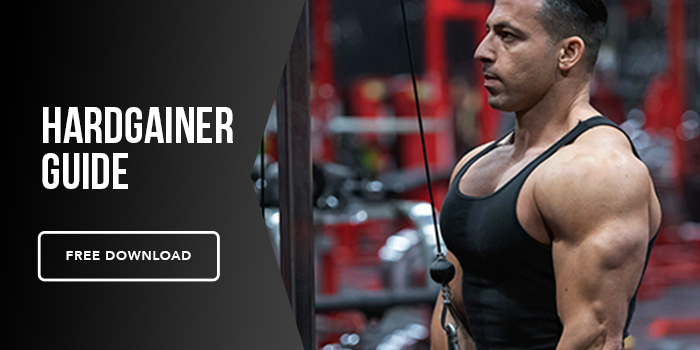All the ranges! That’s your answer.
Packing on muscle means placing a load and stress on the muscle that causes it to break down, and over time, repair and become stronger. In order to do this, you need to provide the proper stress signal. How do you do that?
Progress In The Gym
Progressive overload in simple terms means performing the same exercise you did last week and being able to do it for one more rep or slightly more weight than the week before. It shows your muscle broke down, and repaired itself enough to take on even more stress. Your body is basically adapting to the outside demands you placed on it. It’s really about survival more than it is anything else. Your body wants to keep you alive, and if it feels these heavy loads being placed on certain muscles, it has to adapt to survive.
So how do we know what rep ranges are the best? There isn’t necessarily an OPTIMAL range. All ranges will need to be utilized in order to maximize the growth of the muscle. It really comes down to your specific goal, and even then, that’s only to provide a bias to gear your training towards.
Muscle will adapt and grow with anywhere from 3-20reps. Any less, and you are gaining mostly central nervous system adaptations (and higher risk of injury), and any more it is becoming more of an endurance exercise. An lifter overall will most likely need 8-20 sets, per muscle, per week to elicit a growth response. If you are a beginner lifter you are best starting off with 8-10 sets per muscle, and only adding more if you find your growth has stopped or strength has plateaued.
Rep Range
You want to eventually incorporate all rep ranges to stimulate the most muscle growth.
3-10 reps - This lower rep range will help activate and bias more towards the faster twitch muscle fibers. This is for overall muscle size. I suggest doing your compound lifts in this rep range as they allow you to push the most weight and recruit the most fibers. This is the most taxing on the nervous system, so just make sure form is a priority, and you aren’t overworking your central nervous system. This rep range is common among powerlifters.
10-15 reps - This rep range introduces more volume and time under tension on the muscle. As a result it has more of a mix of tapping into the fast and slow twitch muscle fibers which help the muscles look fuller. This rep range is most commonly used among bodybuilders.
15-20 reps - This rep range continues to incorporate more volume and tension. Less weight will have to be used to achieve this range but it allows you to get the volume and stress needed on the muscle, while providing the lowest injury risk on your joints. This is good to add when you are trying to bring up lagging muscles and need volume, but still allow for a quick enough recovery to perform well on your lower rep work. This range is also good for smaller muscles like shoulders and arms, that can take a lot but don’t cause a ton of systemic fatigue on your system.
Where Do I Start?
You’ll see some coaches recommend including all ranges within the same 6 week training cycle, while others say to stick to one range. If you are new to lifting, I recommend sticking to one rep range for a cycle so you can get a feel for how well your body responds to each rep range.
You may find overtime that you respond REALLY well to 3-10 reps, but at 15+ reps you just get tired, and don’t really feel the muscle working. Someone else may find the complete opposite and find their joints just hurt at lower rep ranges and they aren’t seeing much growth, while at the 10+ range they get a good mind muscle connection, and great overall progress. The beauty of lifting is that you can experiment and see what works for you.
Spend one mesocycle (4-6 week program) on each rep range. Record your progress on your lifts and then spend the next meso on a new rep range. After 3-4 months take a look at your notes and see where you felt you got the best progress from. What you may find is ultimately you arrive on a program that incorporates a mix of everything (lower reps for your compound lifts, and higher reps on the smaller muscle groups).






